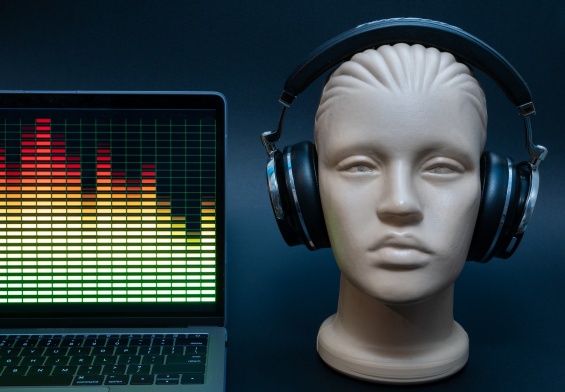Many students believe scoring a perfect 1600 on the SATs is unobtainable. Even more students believe this fact requires extremely high intelligence. However, in actuality, it is possible to achieve a 1600, when students remain motivated, focused, and dedicate ample time to study and prepare. While students should do their best, a perfect SAT score will not hinder them from receiving acceptance to their dream college. In fact, most colleges are willing to look at a student’s super score, which considers the highest section of scores across all dates the student took the SAT. There is also no limit to number of times a student can retake the SAT; therefore, a student can select their best scores, making a once far-fetched dream of earning 1600 on their SAT, now entirely possible. Discover the best practice for how to get a perfect SAT score with both hard work and smart work.
Benefits of Attaining A Perfect SAT Score
SATs scores are among the determining factors for university admission. In fact, the SAT is the nation’s most widely used admissions test, and most colleges now require applicants to submit test scores along with their college application. A near-perfect SAT score will give students the edge they need over other applicants competing for a coveted spot at an Ivy League school or prestigious university. By aiming to score a 1600, students can help to overshadow a less desirable GPA that may hold them back. Furthermore, high SAT scores can greatly contribute to merit-based scholarships offered by a school or third party, thereby lifting a financial burden for students.
Understanding SAT Formatting Updates
The SAT recently experienced an overhaul of it’s structural formatting. As of 2016, the test now consists of 5 sections: Reading, Writing and Language, Math (with calculator), Math (no calculator), and an optional essay. While there are 5 sections, the scoring breaks down into 3 parts:
- Reading and Writing language- These 2 sections combine to form the Evidence-Based Reading and Writing score.
- Both math sections- these now equal one overall math score.
- Optional essay- has its own score.
The Evidence-Based Reading and Writing section and Mathematics section are scored out of 800 points, combining them to yield student’s total SAT score out of a potential 1600 points. In addition to section scores, students also receive a score for each test—Reading, Writing & Language and Math—on a scale from 10 – 40. The optional SAT essay section is graded on three separate dimensions on a 4-point scale and does not impact the SAT score. In other words, there is no composite SAT Essay score (the three scores are not added together) and there are no percentiles for this score.
Timing The SAT Accordingly
All SAT questions are presented in a multiple-choice format and feature four answer options: A-D. Students will greatly benefit knowing what to expect on test day by allocating their time accordingly. The SATs run for approximately 3 hours and 50 minutes, including the optional 50-minute essay. The SAT begins with the reading section consisting of 52 questions and lasting 65 minutes. After a short break, students progress to the writing and language section for approximately 35 minutes. The math no calculator section is 25-minute before they receive a second break period. Finally, students take the math calculator section for 55 minutes before concluding with an optional 50-minute essay section.
To save time, there are helpful answering techniques available for test takers who typically finish the SAT with ample time leftover. For example, instead of answering questions and immediately bubbling in the corresponding answer on the scantron sheet, students should instead answer all questions first in the book, thereby, bubbling all answers in at once. Doing so eliminates precious time preventing the brain from switching between tasks. For students who do not typically finish early, use this method on a page-by-page basis.
Best Practices For Scoring High In The Reading Section

The SAT reading portion is the longest section if the test, consisting of 5 reading passages and 10-12 questions based on the reading. The focus of this section is to measure vocabulary in context, command of evidence, constructing logical arguments, and some scientific reasoning.
The predetermined passage topics are as follows:
- 1 classic or contemporary work of U.S or world literature passage
- 1 U.S. history passage
- 1 social science i.e. economics or psychology passage
- 2 science passages, including charts and infographics for students to interpret.
Academic advisors recommend reviewing the questions in the section before reading the passage. Doing so allows students to gather a sense of what to look for, which can be a useful test-taking technique when under a time constraint. Also, do not underestimate the information at the very beginning of the passage that gives it context. For example, an excerpt from an Abraham Lincoln speech can help students answer questions about what the speaker might be attempting to convey. Furthermore, understanding the tone, style, and purpose of the passage is crucial to helping students decipher information within the passage. Expert educators suggest jotting down notes to refer to later. As with all sections, students should look to eliminate obviously wrong answers first, and strive to answer every question, instead of leaving questions blank.
Since the reading section of the SAT requires students to analyze arguments, students will benefit from reading outside publications such as science journals or literary magazines. Doing so will help expand their vocabulary and allow them to understand an alternate meaning of a word appearing on the SAT.
Best Practices For High Scores On The Writing and Language Section
Designed to test grammar and writing logic, each question in the writing and language section will refer to a sentence within a passage. The context of the sentence is important as questions focus on grammar and should be answered in isolation while other questions focus on how students evaluate the summary of the entire passage. Since this section evaluates students’ grammar and sentence structure, test takers can expect to demonstrate a proper understanding of punctuation, sentence structure, conventional expression, and passives. Doing so will result in a higher SAT score. In addition, academic advisors recommend that students familiarize themselves with the type of questions that will likely appear. In essence, it is not enough to simply study the rule – students are expected to know how to apply it in context.
Best Practices For Scoring 800 On The Mathematics (No Calculator) Section
Students often panic when encountering a math problem without the help of a calculator. But the first step in scoring high in this math section is to relax. Past versions of the SAT did not separate sections; in actuality, calculators often slowed students down using them on questions where it was unnecessary.
The latest SAT redesign splits the math portion into two sections to reassure students that there will be no questions requiring any type of advanced calculations. This math section puts an emphasis on student’s reasoning and problem-solving abilities, including basic algebra and geometry concepts.
Academic advisors recommend preparing for this section by studying key concepts and timing basic arithmetic skills. Students can also utilize close reading or critical analysis skills, to prepare for mathematical word problems.
Best Practices For Scoring An 800 On The Math (Calculator) Section
Using the calculator on this SAT section is not always necessary because calculators can slow students down and take up valuable time. Academic advisors encourage students to use their best judgment for determining which math questions actually require calculator use. Under the strict time constraint, students must identify math problems that they foresee will take longer to solve, thereby reserving them for last. Experts suggest that if a question takes longer than 45 seconds to a minute, skip it and answer the equation later.
When practicing for the math section, students should strive to actively learn the concepts by allowing for mistakes. An incorrect answer on a practice exam can teach a student how to tackle a similar one on the actual SAT. Educational experts agree trying to resolve an equation using different methods can be highly beneficial; engaging and struggling to solve an answer can help students fully learn the correct answer and the concept behind it.
Benefits Of Writing The Optional Essay Section
Technically, the essay portion of the SAT is optional, however, certain schools require essay scores, as to increase students’ chance of acceptance. It is important for students to check beforehand whether their college application requires the optional essay, before dismissing this section. College admission boards suggest that even if a particular university does not require an essay, they recommend students complete the essay regardless to bolster their application and be considered.
The optional essay requires students to analyze a passage and build an argument. This SAT portion measures students’ understanding on finding and using evidence to support an argument. The SAT optional essay is structured using a standard 5-paragraph approach containing an introduction, 3 supporting paragraphs, and a conclusion. In order to excel and score high well in this section, students should include examples and textual evidence to support their argument.
The SAT optional essay is the only section graded by humans with a specific criteria; graded factors include- reading, analysis, and writing, focusing on these criteria during test preparation will greatly help students write a high scoring essay. Moreover, students should write multiple drafts and have each version edited by a parent, teacher, or professional tutor. Seeking helpful criticism is helpful because writers often cannot be objective about their own work, or detect minor errors. A high scoring essay is one that utilizes precise language, demonstrates effective analysis, and is consistent, well organized, and easy to read.
SAT Test Day Preparation and Habits
Once ambitious students are confident in their studying and test taking abilities, it is equally important for them to deploy healthy habits in order to be mentally ready for test day. For instance, eating a nutritional breakfast contributes to a better mental sharpness with increased concentration, mood, and memory. Hunger can also be a distraction, so it is important to eat before taking this important exam. It is also wise to get enough sleep the night before. Parents can help children incorporate these healthy habits during study sessions leading up to exam day. Doing so will greatly ease anxiety and allow students to focus on retaining information. Furthermore, proctors recommend students wear layers on test day since classrooms have a tendency to fluctuate in temperature. Likewise, students wearing comfortable clothes and shoes will feel more at ease sitting at a desk for an extensive period of time. In order to appropriately pace themselves, students may wear a watch on test day. Finally, students should stretch, walk tall into the classroom and exude confidence as anticipating success often brings it.
Steps For SAT Success
Aiming for perfection is admirable. But all too often students settle for average scores instead of using the right study tools to set them up for academic success, which translates into a near perfect SAT score. With these best practices, students can set exceed their expectations and gain acceptance into a dream school of their choice and moreover, receive multiple acceptance offers. Landing an SAT score well above the average percentile takes determination, health study habits, time, and practice tests. Many students have found practice SAT tests profoundly helpful in scoring high on the SATs. Tutors encourage students to take a mock SAT test ease anxieties come test day because students will know what to expect, find their ideal pace, and strategize how to answer questions. For example, students can mark questions that they are unsure of, and work with a professional to brush up on understanding why their answer was incorrect. Start preparing for the SAT today by contacting an academic tutoring center near you today.




